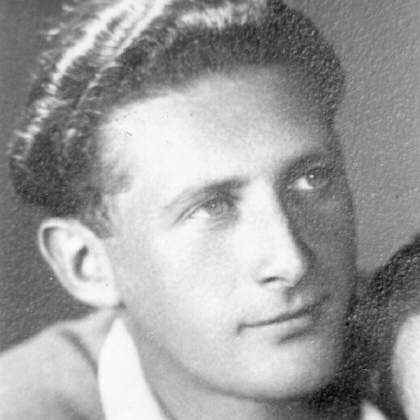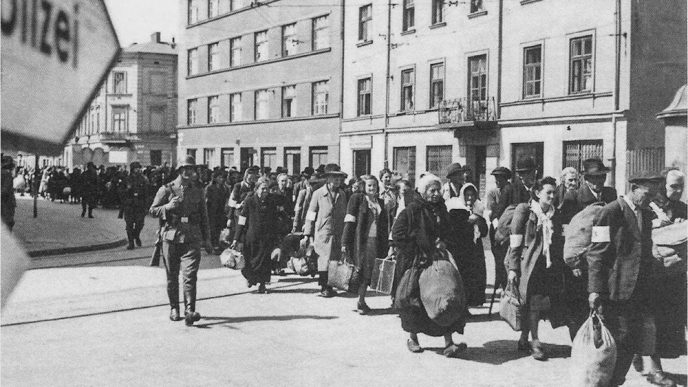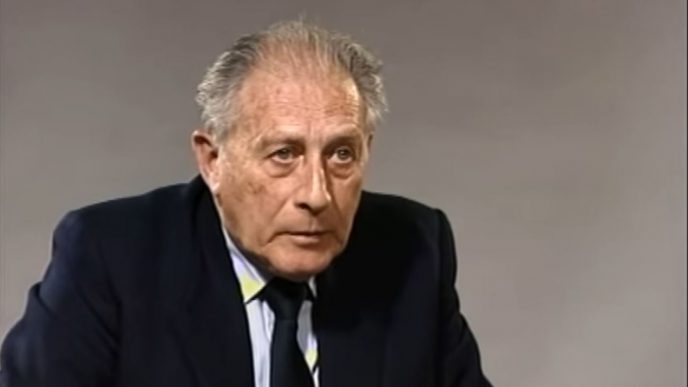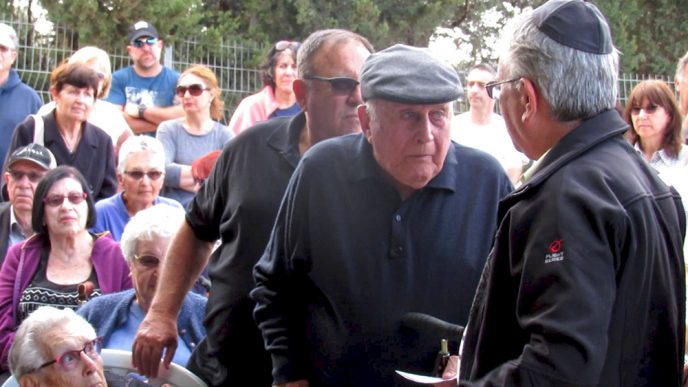
“Our plan was to take to the streets of Krakow, and to throw Molotov cocktails at three cafes,” Yehuda Maimon, also known as “Poldek,” vividly described scenes from the Krakow rebellion against the Nazis to a group of Israeli high school students. We went out in groups of two to put up posters calling on the Poles to revolt. We set fires so that the firefighters would have to put them out, causing a huge commotion in the city.”
Maimon passed away last month at the age of 96. In his last years, Maimon often met with groups of Israeli youth to tell his astonishing story as a Holocaust survivor who participated in the Krakow Ghetto uprising, was imprisoned in Auschwitz, and survived the death marches.
In particular, he would tell his captivated audience about the events of December 22, 1942, when he and other members of his youth movement attacked a group of Nazi officers who were celebrating their Christmas leave at the Cyganeria Cafe in Krakow.
“Everyone who was active in the movement at that time was part of the effort,” he said.

When it was all over, Maimon went to hide at the house of Elsa Lustgarten and Shishon “Symek” Draenger, two leaders in the Krakow underground. There, he met with others who had participated directly in the violent attack, which killed 11 and wounded 13 Nazi soldiers.
“It was an unforgettable night. We felt for the first time since the outbreak of the war that we regained our status as human beings,” Maimon said.
His audience of teenagers was enthralled.
“We did not think we would win,” Poldek told them, "but we wanted the Jewish community in Israel to know that the Jews fought.”
“All we thought about was Israel,” he continued. “We knew it was unlikely that we would ever get there. But the mere existence of a community there gave us hope for the Jewish people’s future.”
Maimon concludes with words from Draegnger, who was his mentor: “When you visit Poland, you are visiting the largest cemetery of the Jewish people. When you want to mix in a dash of pride with the terrible pain, go to the place where the Cyganeria Cafe was located in Krakow. There, in that place, Jewish youth rebelled.”
Escaping the death march
Maimon was born in Krakow, Poland on February 2, 1924 as Leopold Wasserman. In his youth, he was educated at the Hebrew Gymnasium in the city, and was a member of the Scouts youth movement. He then joined the Akiva youth movement, which was the largest and most significant Zionist youth movement in Krakow.

During the first years of the war, he was confined in the Krakow Ghetto. Like many youth movement members of that period, he joined the underground, which was known as HeChalutz HaLochem (the Fighting Pioneers). Soon, he was appointed coordinator of the underground’s headquarters.
After the attack on the Cyganeria Cafe, Maimon was captured. He was sent to a local prison, where he was tortured and interrogated, and from there to Auschwitz. In Auschwitz, he again joined the underground resistance.
In 1945, the Germans began evacuating the prisoners from Auschwitz, leading them on “death marches” to other concentration camps farther from the approaching Allied forces. In January, Poldek managed to escape and returned to Krakow, where he joined an effort to organize the remaining Jews in Poland to immigrate to Israel.
In June 1946, Maimon immigrated to Israel, which was illegal at the time due to British restrictions on Jewish immigration.
From the Krakow underground to the Israeli Navy
In Israel, Maimon lived for a short period on Kibbutz Ein HaHoresh, as part of a group of Hashomer Hatzair members. Soon after it was founded, he enlisted in the PalYam, the division of the Haganah responsible for naval operation. He was sent to a boat commanders' course at Kibbutz Sdot Yam.
He served in the Israeli Navy from the time of its establishment until 1972, a period of 24 years. He was released in May 1972 with the rank of lieutenant colonel.
In 1963, he became the first secretary of the Israeli embassy in Warsaw. In 1968, he was appointed a special representative of the State of Israel in Austria.

After finishing his time in public service, he was appointed CEO of McNumatic Ltd., a Swedish construction company. In 1987 he retired, devoting his time, among other things, to meetings with teenagers and to sharing the story of his experiences in Poland during the war.
He leaves behind two sons.






